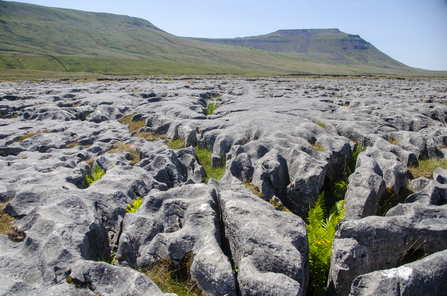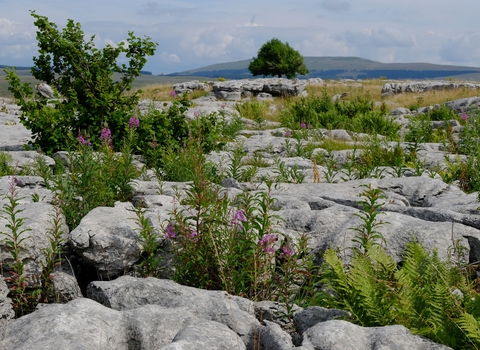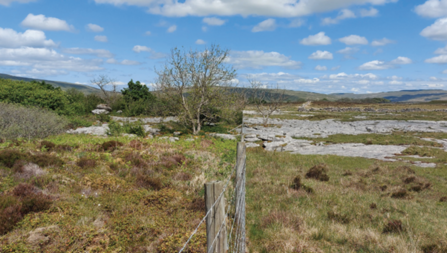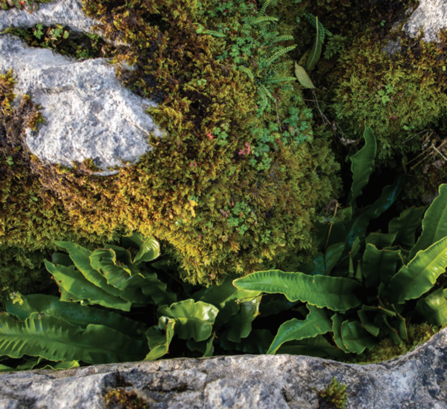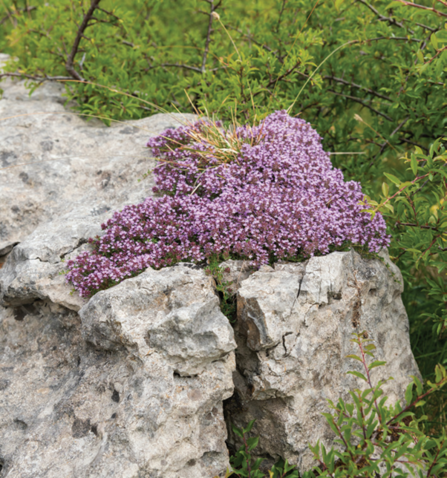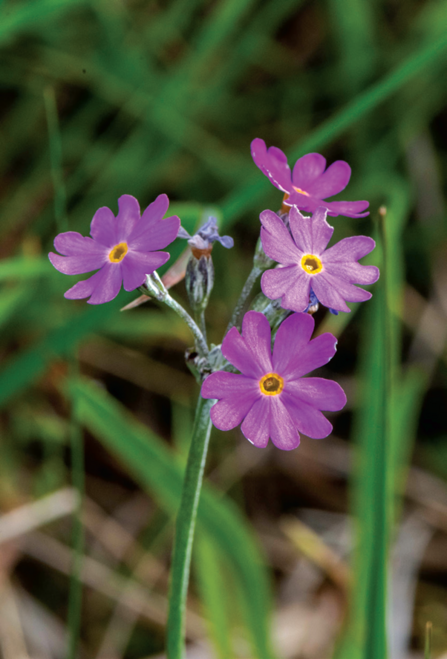Limestone pavement is a rare and irreplaceable geological landscape, made up of flat expanses of limestone with deep cracks along natural joints (called grykes), forming separate blocks (clints). It is also one of our most plant-rich habitats, and supports many scarce or rare species.
How is it formed?
Rock from life
To visit Ingleborough 330 million years ago during the Carboniferous era, when Yorkshire was on the equator, you would be snorkelling in a shallow, warm tropical sea in a climate more like the Caribbean than the cool uplands of today. You would be swimming amongst large shellfish - snail-like goniatids and clam-like bivalves, coral reefs and forests of filter-feeding sea lilies. As these died and dropped to the seabed, their shells and skeletons formed thick layers of calcium carbonate which eventually turned into limestone.


